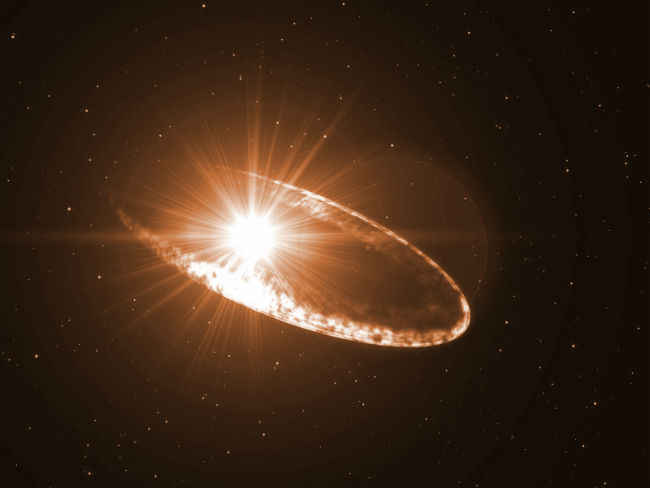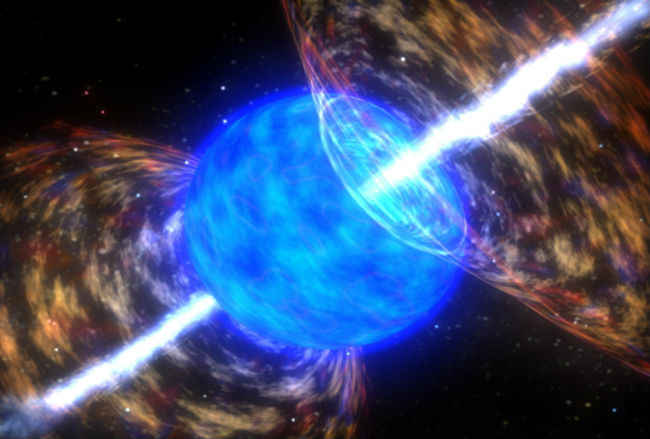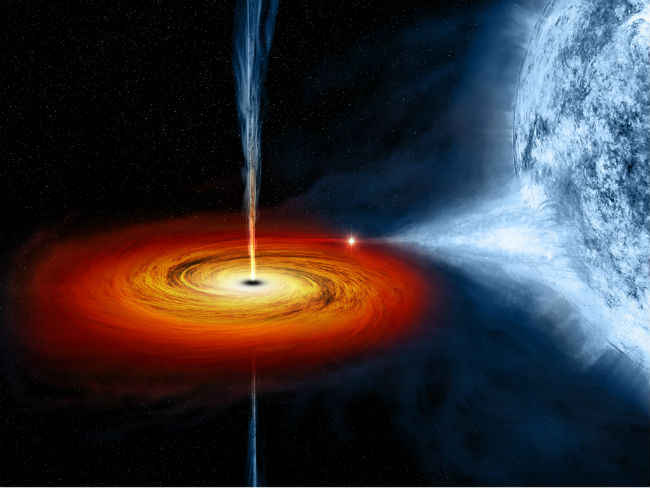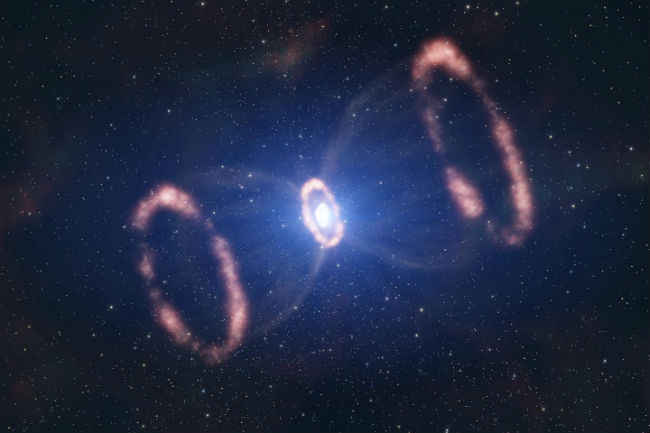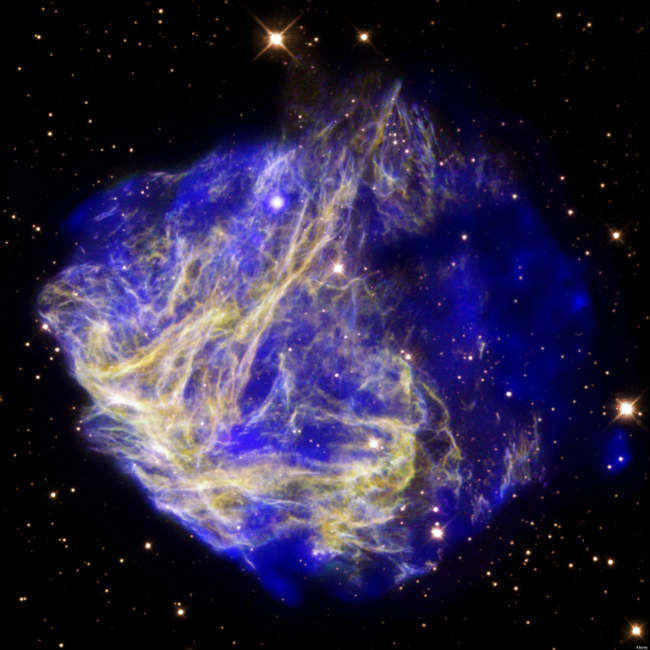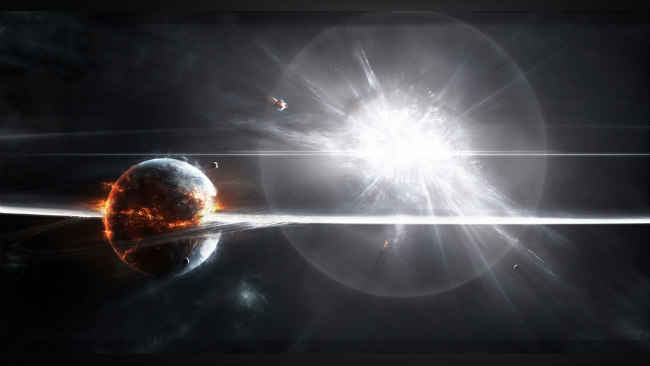Superluminous Supernovae: The gorgeous mega-villains of outer space
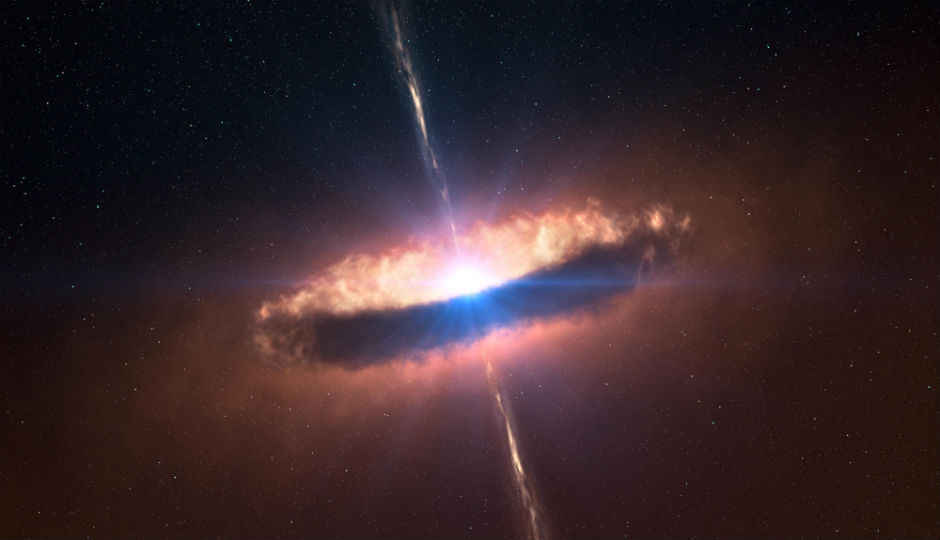
In the depths of space is an explosion of a star that is multiple times brighter and more violent than that of a standard supernova
Beauty, as they say, depends on how you perceive it. The vast space has eons of mysteries tucked away in distant corners, much of which we have not yet set sight upon. However, our greatest scientific and engineering efforts are reaching out to see the farthest, darkest corners of outer space with greater panache than ever before. In this instance, what we witnessed at the beginning of 2016 was something that scientists and researchers are stating was a ‘hypernova’, or a superluminous supernova.
For reference, a supernova itself is a sight to behold. It is the sharp, violent death of a star when it finally runs out of its fuel, emitting immense amounts of energy and light out and shining its brightest, before eventually fading and burning out. Yet another type of supernova occurs when two white stars, bigger than our dwarf star the Sun, collide with each other, leading to the instability of their cores and a subsequent thermonuclear reaction. These, as held by researchers, have a characteristic type of luminance, hence forming a metric in the scaling of supernovae.
The most beautiful moments are also the most violent
The latest type, however, is rarer, and incomprehensibly more hostile. Superluminous supernovae, as the name itself suggests, is something that is far more violent and hostile than the average death of a star. These are brighter than the brightest, compounding immense amounts of force and energy at the point of explosion. They also occur across multiple stages, and the overall phenomena has only recently come to light.
That itself is not really surprising, seeing how the first superluminous supernovae are estimated to be only about a few billion light years away from us. What is it, that makes such gargantuan creations in outer space? How are they formed, and what are the forces that are at play there? The research has only about begun, but from what has been found, superluminous supernovae are as mesmerising as their very name.
What is a superluminous supernova?
Quite literally, a superluminous supernova is the explosion of a star that is multiple times brighter and more violent than that of a standard explosion. These are typically about 100 times brighter than a supernova, and from what researchers have revealed so far, occur mostly because of exceptional circumstances – collision of giant stars or exceptional thermonuclear explosions being the more ‘common’ of exceptional cases.
Although we have observed a number of stellar deaths leading to this phenomenon, the entire range of causal factors is not yet known. Out of the four broad categories into which supernovae are classified, researchers have at least experienced the corresponding superluminous phenomenon of three types. This relatively new field of research has hence kept the precise postulates under research, but nevertheless, we do seem to have a fair idea of what these comprise.
Now you know what happens when two stars collide
Superluminous supernovae typically last for over six months, as compared to the duration of 2-3 weeks for a standard supernova. The reactions, too, are different in nature, and far more titanic than the standard incident of the death of a star. Multiple causing factors have been identified, of which we will talk about in the next section. These are also believed now to be a significant source of gamma ray bursts in the cosmos, although concrete outtakes are yet to be derived of it.
As against a typical supernova, the superluminous supernovae are said to feature two sections in the stellar explosion. Before the major explosion that sustains over months and shines consistently brighter than its surrounding galaxy for a much longer span, there is a smaller, initial explosion – a starter ignition of sorts – that leads to a subsequent dip spanning over a few days. It is following this that there is a surge in the energy and light emission of the superluminous supernova.
This entire procedure is what makes this phenomenon rare, extremely volatile and unusual. There are even more titanic explosions across our galaxies far, far away (not akin the Death Star, of course) that shine even brighter. For instance, an explosion observed by the All-Sky Automated Survey for Supernovae (ASASSN) was from a source that takes light 3.8 billion years to reach, and was reportedly twice as bright as the largest known superluminous supernova.
A giant star was torn apart to create the brightest galactic observation yet
The reason of this explosion is now being attributed to the impact of a gargantuan black hole that literally ripped a massive star apart, to create light and energy that is 570 billion times higher than the Sun’s peak light and energy radiation. While this will indeed go down as the death of a star, and technically fall under a superluminous supernova, our speculations would say that this is certainly an infrequent occurrence. If not, though, then we have forces that are far greater than what we have known of, till date.
This, to sum up, is a superluminous supernova. The violent death of a massive star, catalysed by anomalous elements to form fireballs of energy that is way beyond standard comprehension. How do they occur, though?
This is how they are formed
Before we begin, it is essential to understand that the causal factors of a superluminous supernova are highly unusual, and as such, have been pegged as possibilities. Not always can the exact reason of the formation of a superluminous supernova be understood in accordance to their type, simply because of their highly complicated structure and massive parameters of the explosions.
A supernova typically forms when the core of a star collapses to give rise to a gravitational pullback of energy. When this happens, there are multiple times when the core is too heavy, and the core’s explosive propulsion is not enough to eject the outer shells of the star. This leads to a silent death of a star that ends up forming black holes.
Supernovae are formed only when the core of the star weighs between 5 and 15 times the mass of our star, the Sun. When the gravitational collapse of such a star begins, a faint supernova is produced when the star has slow rotational rate. The slow speed ejects smaller jets to outer orbits over short distances, thereby forming the essence of a standard, or in our case, a faint supernova.
The force is literally quite strong here
Considering the chemical constituency of the dying stars in our examples are constant, a superluminous supernova will occur only when the star has very fast rotational speeds. This leads to light and energy being spewed far beyond the outer shells as the core falls through in gravitational collapse, and these jets of light and energy are relative in magnitude to the rotational speed. This is what makes a more ‘usual’ superluminous supernova, which also leads to long outbursts of gamma rays.
However, there are further questions within the primary postulate of stellar explosions leading to superluminous supernovae. While the mass and rotational speeds do contribute to the formation, the chemical constituency is also a major deciding factor on the feasibility of titanic explosions. Typically, a star that ends up in a superluminous supernova has higher metallicity alongside the standard Hydrogen-Helium composition, which further leads to very high surface temperatures and luminosity at death. It is this that makes them shine brighter and at significantly higher temperatures for sustained durations, in which it surpasses the energy given out by a standard supernova.
When birthplace meets death
While the previous model explains superluminous supernovae with high gamma ray outbursts, the other explanation is of stellar deaths that do not contribute to gamma outbursts. This one is fairly similar to the SN2005gl supernova observed in 2005, and the more recent, still-under-debacle ASASSN-15lh explosion. The reason for the formation of superluminous energies here is the consistent observation of how these stars are embedded within corresponding nebulae – a highly proactive galactic zone rich in circumstellar material. These are the elements that give birth to a star, and upon its death, the energy jets react with the matter to create visible shockwaves of stellar energy. Interestingly, the formation of superluminous supernovae from circumstellar matter do not necessarily depend on the constituency of the star, but more on its spatial arrangement.
There are other observed processes in the formation of massive supernovae, as well, but they get increasingly rarer. For instance, super-massive stars in the order of 260 times the mass of Sun give rise to particles and antiparticles upon explosion. The existence of opposing matter leads to extremely rapid partial collapse of the core, which further causes simultaneous fusion of matter aided by gravity, all of which leads to the complete death of a star, and an extreme magnitude of energy and light repulsion that can be as much as one hundred times more intense than the highest standard supernova. The process has not yet been confirmed in interstellar space, seeing that the sheer size of stars that can have such reactions are not present in our immediate universe.
The birth of a magnetar, as explained by Matthew Smith, post-doctoral researcher at the University of Southampton to Phys.org, can also be a plausible reason behind the birth of a superluminous supernova. The phenomenon would involve the birth of a rapidly spinning neutron star, preceded by extreme heat and energy followed by rapid cooling. While the rapid cooling observation would be somewhat against a superluminous supernova, the observations are so far being studied to collate further information, before inferring.
Probability and geometry
The core collapse model also goes beyond probability factors of understanding superluminous supernovae. Cosimo Inserra and his team from Queens University, Belfast, have obtained spectropolarimetric data on recent hypernova observations to affirm that despite an asymmetric, spherical pattern of the stars in explosion, the formation pivots around a primary axis, and the polarisation of matter changes in time and wavelength.
This coincides with the core-collapse model of a star’s death, further proving that while superluminous supernovae have been much recent discoveries, they have actually been an ancient phenomena, and may not even be as rare going beyond our present, engineering limits.
A new milestone for space research
While not much have been attributed to the impact of superluminous supernovae in terms of terrestrial impact, they do contribute further to the study of black holes, neutron stars and the core reactions in massive stars. It also lends basis to the study of gamma radiation bursts, which till the turn of the millennium was a matter completely shrouded in mystery. Even with the plausible explanations, the matter of short-duration gamma bursts still remain in question, and the hypernovae only contribute to long-duration bursts.
Now this won’t ever happen… Hopefully
While hyper-size star theories still remain in question because of the rarity, a possible massive gamma radiation burst has already been attributed to the second-largest extinction ever on Earth, during the Hirnantian Age of the Ordovician Period, more than 440 million years ago. While this was only ever a hypothesis and no concrete evidence was found, it may have been on the impact of a massive star’s violent death due to matter-antimatter collision.
Our immediate future seems to be more secure, and mankind has far greater threat of extinction from global climate change than from an imminent hypernova. With every discovery we escalate to a new height of stellar explosion force that exceeds previous gargantuan figures significantly. The ongoing research on superluminous supernovae is a major milestone for space research, because of these very titanic forces at play. These aptly define the endless borders of space, and how practically infinite can the titanic nature of forces be.

